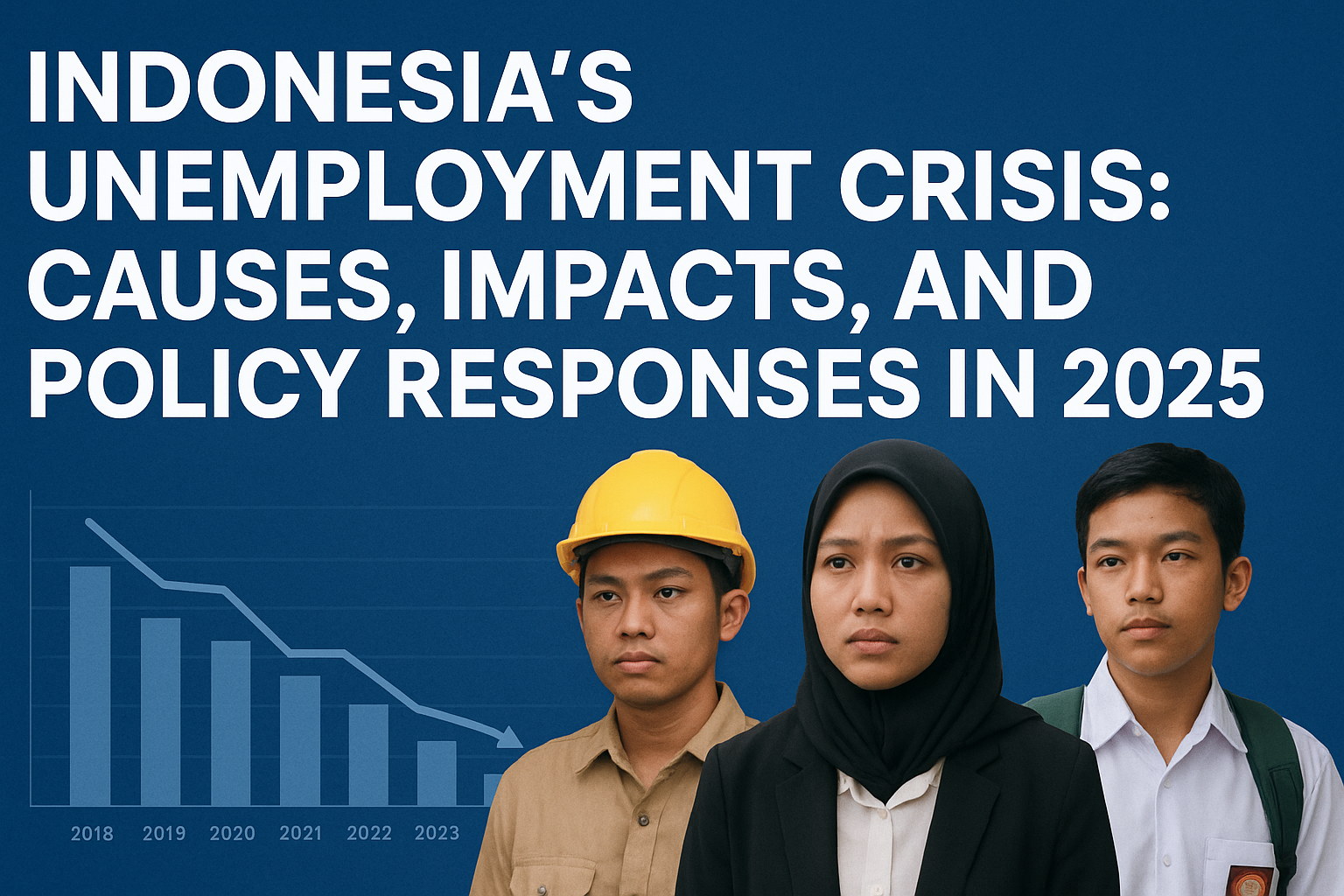Indonesia’s Unemployment Crisis: Causes, Impacts, and Policy Responses in 2025
UncategorizedIndonesia’s Unemployment Crisis: Causes, Impacts, and Policy Responses in 2025
Indonesia, Southeast Asia’s largest economy, is grappling with a persistent unemployment challenge in 2025. Despite recent economic growth, the nation faces structural issues that hinder job creation and economic stability. This article delves into the causes, impacts, and policy responses to Indonesia’s unemployment crisis.
1. Unemployment Trends in 2025
As of August 2024, Indonesia’s unemployment rate stood at 4.91%, a decrease from 5.32% in August 2023. However, this figure masks underlying challenges. The youth unemployment rate remains alarmingly high, with approximately 16% of Indonesians aged 15-24 out of work, more than double the rates of neighboring countries like Thailand and Vietnam .CEIC Data+2The Jakarta Post+2Al Jazeera
In February 2025, the unemployment rate was 4.07%, a slight decrease from the previous year. However, the labor force participation rate decreased by 0.35 percentage points compared to February 2024, indicating potential discouragement among job seekers .Lampung BPS
2. Structural Challenges in the Labor Market
2.1. Shift from Manufacturing to Resource-Based Industries
Indonesia’s economic transition from labor-intensive manufacturing to capital-intensive resource sectors has led to rising unemployment and declining middle-class prosperity. Major factory closures, such as PT Sri Rejeki Isman (Sritex), have contributed to tens of thousands of job losses .Financial Times+1
2.2. Informal Employment and Underemployment
A significant portion of the workforce is engaged in informal employment, which often lacks job security and benefits. In August 2024, 60.81 million people (42.05%) were engaged in formal activities, representing an increase of 1.16 percentage points compared to August 2023 .Badan Pusat Statistik Indonesia
2.3. Education-Job Mismatch
Despite improvements in educational attainment, many graduates struggle to find employment that matches their qualifications. The government is working to bridge this education-job gap through various initiatives .Antara News
3. Government Initiatives and Policy Responses
3.1. Free School Meals Program
To combat malnutrition and support families, the Indonesian government launched a free meals program in January 2024. The initiative aims to provide meals to approximately 20 million students, expanding to 83 million recipients, including pregnant women. The program is expected to create over one million new jobs by 2027 .Reuters
3.2. Support for Troubled Industries
The government has intervened to support struggling industries. For instance, President Prabowo Subianto directed efforts to save Sritex, a major textile company facing bankruptcy, to prevent significant layoffs .Instagram+3Reuters+3Financial Times+3
3.3. Economic Growth Targets
President Prabowo Subianto has set an ambitious annual economic growth target of 8%. However, economists express skepticism, with the World Bank forecasting only 4.7% growth in 2025. Experts urge pro-market reforms and investment in labor-intensive sectors to revitalize the economy and prevent further socio-political instability .The AustralianFinancial Times
4. Socio-Economic Impacts
4.1. Poverty Reduction
Despite challenges, Indonesia has made progress in reducing poverty. The poverty rate decreased to 10.69% in March 2024, down from 11.11% in March 2023 .Lampung BPS
4.2. Gender Disparities
There are notable gender disparities in employment. In August 2024, the average monthly wage for male employees was 3.54 million rupiahs, while female employees earned 2.77 million rupiahs. These disparities highlight the need for policies promoting gender equality in the workforce .Badan Pusat Statistik Indonesia
5. Future Outlook and Recommendations
Addressing Indonesia’s unemployment crisis requires a multifaceted approach:
- Diversifying the Economy: Investing in sectors that can create jobs, such as technology and services, is crucial.
- Enhancing Education and Training: Aligning educational outcomes with labor market needs can reduce the education-job mismatch.Antara News
- Supporting Small and Medium Enterprises (SMEs): SMEs are significant job creators and should be supported through favorable policies and access to finance.
- Promoting Inclusive Growth: Ensuring that economic growth benefits all segments of society, including women and marginalized groups, is essential for sustainable developmen

